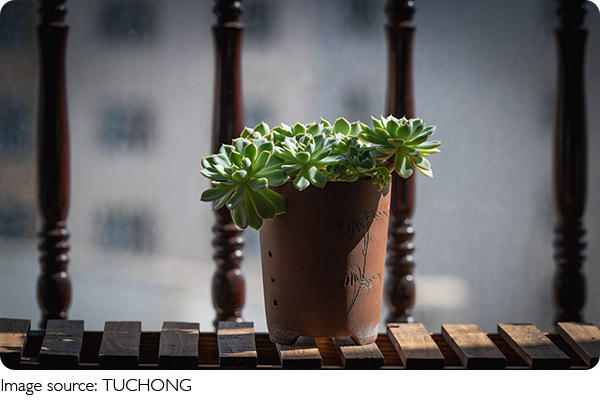Light for Plants

If you've ever wondered why one plant flourishes on your sunny windowsill while another struggles, light might be the key factor. We often think watering and soil are the most important parts of plant care, but in reality, light is just as crucial.
We can think of light as the plant's food source. Through a process called photosynthesis, plants turn sunlight into the energy they need to grow, flower, and stay healthy. Without the right amount of light, plants can't thrive—no matter how carefully we water or fertilize them.
Different plants, different light needs
Not all plants crave the same amount of sunshine. Some are natural sun-seekers, while others evolved in shady forests and can't handle too much direct light.
Here's a simple breakdown:
Full Sun (6+ hours/day)
These plants love basking in the sun and need lots of direct light to grow well. Think of:
• Succulents and cacti
• Herbs like rosemary and thyme
• Geraniums and petunias
Bright Indirect Light
Many popular indoor plants prefer bright light that is filtered, such as near a window with sheer curtains or a bright room without direct beams of sunlight.
• Monstera deliciosa
• Fiddle leaf fig
• Peace lilies
Low Light
Some plants tolerate or even prefer low light levels. These are perfect for spots further from windows or in rooms with less natural light.
• Snake plant
• ZZ plant
• Pothos
By understanding this basic grouping, we can already start choosing the right place for each of our plants.
How can we tell if light is enough?
We can't exactly ask our plants how they feel, but they do give us clues. Here's what to watch for:
If a plant needs more light:
• Leggy growth (long stems with fewer leaves)
• Smaller, pale leaves
• Slow growth or no flowering
If a plant is getting too much light:
• Leaves develop scorched brown patches
• Leaves curl or dry out
• Faded leaf color
When we observe these signs, it's time to adjust their placement.
Measuring light at home
It can be tricky to know exactly how much light a spot in our home gets. Luckily, we have a few easy ways to check:
• Hand shadow test: On a sunny day, hold your hand about a foot above the surface where your plant will go. A sharp shadow indicates bright light, a soft shadow means medium light, and a faint shadow suggests low light.
• Light meter apps: Several smartphone apps can give us a rough estimate of light levels in lux or foot-candles.
For reference:
• Bright indirect light: around 1,000–2,000 foot-candles
• Low light: under 500 foot-candles
How seasons affect light indoors
Just as the seasons change outdoors, the quality of indoor light shifts too. In summer, sunlight is more direct and stronger. In winter, it is weaker and the sun's angle changes.
What does this mean for us? We may need to move plants closer to windows in winter and pull them back slightly in summer to avoid leaf burn.
Expert insights on light and plant growth
According to horticulture experts at the University of Florida's Institute of Food and Agricultural Sciences, “Light is the most critical factor in photosynthesis and one of the most common limiting factors for plant growth indoors.” They recommend observing how light moves through the room during the day to find the best spots for our plants.
Additionally, experts suggest rotating plants regularly to ensure all sides get even light exposure, which encourages balanced growth.
Using artificial light
Sometimes, natural light alone isn't enough—especially in offices or homes with few windows. That's where artificial grow lights can help.
Good options include:
• LED grow lights, which are energy-efficient and adjustable
• Full-spectrum fluorescent lights, ideal for starting seedlings or supplementing daylight
When using artificial light, aim for 12–16 hours of light per day, depending on the plant type.

Final thoughts: Let's light up our plants!
By understanding how much light each of our plants needs, we can give them a happier and healthier life. And don't worry—it doesn't take complicated tools or a science degree. A little observation and adjusting go a long way.
Now, Lykkers, we'd love to know—what plant lighting challenge are you facing? Have you tried moving a plant to a new spot and noticed the difference? Share your experiences with us. Let's grow greener homes together!

 · Plant Team
· Plant Team